USB-IF (USB 实施者论坛)组织最近推出了一种新的命名规则,将每个 5 Gbps 或更快的端口列为 USB 5 Gbps、USB 10 Gbps、USB 20 Gbps 或 USB 40 Gbps,而不使用版本号。
USB-IF (USB Implementer’s Forum), the organization recently introduced a new naming convention that lists every port that’s 5 Gbps or faster as USB 5 Gbps, USB 10 Gbps, USB 20 Gbps or USB 40 Gbps, without using version numbers.
也有很多 USB 设备没有经过官方认证。
Most USB devices don’t go through the official certification process.
| Version | Speed | Name | Speed Name | Connectors |
| 1.0 | 1.5 Mbps | LowSpeed | - | Type-A, Type-B |
| 1.1 | 12 Mbps | FullSpeed | - | Type-A, Type-B |
| 2 | 480 Mbps | Hi-Speed USB | - | Type-A, Type-B, Type-C,Mini, Micro |
| 3.0 / 3.1 Gen 1 / 3.2 Gen 1 | 5 Gbps | SuperSpeed USB | USB 5 Gpbs | Type-A, Type-B, Type-C,Micro |
| 3.1 Gen 2 / 3.2 Gen 2 | 10 Gbps | SuperSpeed USB 10 Gbps | USB 10 Gbps | Type-A, Type-C |
| 3.2 Gen 2x2 | 20 Gbps | SuperSpeed USB 20 Gbps | USB 20 Gbps | Type-C |
| USB4 (aka USB 4) | 20 / 40 Gbps | USB 20 Gbps / USB 40 Gbps | Type-C | |
| USB4 Version 2 | 80 Gbps | Type-C |
1. USB 1.1 / 1.0:
* Historical context: The early days of USB when it was just getting started.
2. USB 2.0:
* Commonly used for peripherals and data transfer.
3. USB 3.0 / 3.1 Gen 1 / 3.2 Gen 1:
* Ideal for faster data transfer and external storage devices.
4. USB 3.1 Gen 2 / 3.2 Gen 2:
* Even speedier data transfer and improved performance.
5. USB 3.2 Gen 2x2:
* Lightning-fast data transfer for demanding tasks.
6. USB4
* Cutting-edge technology with impressive bandwidth.
| 规格/形状 | USB 1.0/1.1/2.0 | USB 3.0/USB 3.1 |
| Type A |
|
|
| Type B |
|
|
| Type C |
| |
| Mini A |
| 无 |
| Mini B |
| 无 |
| Micro A |
|
|
| Micro B |
|
|
USB Type-A
USB Type-A 接口可支持 5 或 10 Gbps 的 USB 1.1、USB 2 或 USB 3.x,但这完全取决于设备或电缆的支持。
USB Type-A connectors may support USB 1.1, USB 2 or USB 3.x in 5 or 10 Gbps varieties, but this all depends on what the device or cable supports.
USB 3.x 端口有时为蓝色,达到 10 Gbps 的端口有时为红色。
USB 3.x ports are sometimes blue and those which reach 10 Gbps are sometimes red.
USB Type-B
USB-B 主要用于很大的外围设备,如打印机。
USB-B is primarily used with the largest peripherals, such as printers.
Mini USB
现在,迷你 USB 已成为过去式,取而代之的是微型 USB。但在一些较旧的游戏控制器或数码相机上仍能看到迷你 USB 的身影。
Mini USB is now mostly a thing of the past, having been replaced by micro USB. You may still see mini USB on some older game controllers or digital cameras.
Micro USB
虽然 USB-C 是一种更新更好的连接器,尺寸也差不多,但你仍然会在大量设备上看到 micro USB,从经济型安卓平板电脑到 Raspberry Pis、微型控制器、数码相机、电源箱和智能家居设备,不一而足。从技术上讲,微型 USB 有 Type-A 和 Type-B,但你只可能看到 Type-B。
Though USB-C is a newer and better connector that’s about the same size, you will still see micro USB on a ton of devices, ranging from budget Android tablets to Raspberry Pis, micro controllers, digital cameras, power banks and smart home devices. Technically speaking, there is both micro USB Type-A and Type-B, but you’re only likely to see Type-B.
USB Type-C
这些电缆上的插头呈长圆形,与其他 USB 接口不同的是,插入时的方向并不重要。
The plugs on these cables are oblong in shape, and unlike any other USB connector, it does not matter which orientation you use to plug them in.
USB-C 电缆可以传输数据、视频和电源(最高 240 瓦),但并非每条电缆都支持所有这些功能,因此您需要查看规格。
USB-C cables can deliver data, video, and power (up to 240 watts), though not every cable supports all of these features so you need to check the specs.
USB power standards ( USB供电标准)
除了苹果公司的 iPhone 外,几乎所有移动设备都能通过 USB 充电。你也可以通过 USB 连接为任何最好的超极本或最好的便携式显示器供电。但并不是所有的 USB 端口和电缆都能提供相同的电量。
With the exception of Apple’s iPhones, just about every mobile device charges over USB. You can also power any of the best ultrabooks or best portable monitors off of a USB connection. But not all USB ports and cables deliver the same amount of juice.
| Standard | Port Type | Max Watts | Max Amps | Volts |
| USB 3.2 / 3.1 / 3.0 | USB-A, USB-B | 4.5W | 900mA | 5V |
| USB Power Delivery (PD) | USB-C Only | 240W | 5A | 5V, 9V, 15V, 20V, 28V, 36V, 48V |
| USB Battery Charging (BC) | USB-A, USB-C | 7.5W | 1.5A | 5V |
| USB-C (non PD) | USB-C | 15W | 3A | 5V |
| USB 2.0 | USB-A, USB-B, micro USB | 2.5W | 500mA | 5V |
大多数现代手机充电器和所有笔记本电脑充电器都使用某种 USB PD,但并非所有 USB-PD 设备的最大功率都相同,因此一定要检查充电器和电缆。对于笔记本电脑来说,60W 是最常见的最低功率,而超过 100W 的则不太常见,因为这是一种较新的标准。
Most modern phone chargers and all laptop chargers use some kind of USB PD, but not all USB-PD devices have the same maximum wattage, so be sure to check the chargers and cables. For laptops, 60W is the most common minimum and those that go over 100W are less common as this is a newer standard.
Video Over USB
DisplayPort 替代模式(Alt Mode)是简化现代 PC(尤其是笔记本电脑)布线的另一种方法。利用 DisplayPort Alt 模式,USB-C 电缆可以传输非 USB 信号。在 DisplayPort Alt 模式下,电脑可以通过 USB-C 电缆传输 DisplayPort 信号。
DisplayPort Alternative Mode (Alt Mode) is yet another way to simplify cabling on modern PCs, particularly with laptops. With DisplayPort Alt Mode, a USB-C cable can deliver non-USB signals. In the case of DisplayPort Alt Mode, a computer can transmit a DisplayPort signal over a USB-C cable.
对于台式机来说,这可能不是什么大问题,但对于笔记本电脑来说,这是一个很大的优势。USB-C 端口在物理尺寸上比 HDMI 或 DisplayPort 都要小,因此能在保持笔记本电脑小尺寸的同时传输 DisplayPort 信号,对 PC OEM 厂商来说是一大福音。
While this is probably not much of a concern for a desktop, it is a big advantage for laptops. A USB-C port is physically smaller than HDMI or DisplayPort, so being able to transmit a DisplayPort signal while keeping a laptop's dimensions small is a boon for PC OEMs.
遗憾的是,你通常无法通过观察来判断笔记本电脑的 USB-C 端口是否能传输视频。您需要阅读电脑的使用手册或规格表,或者您可以做个实验。
Unfortunately, you usually cannot tell if a laptop’s USB-C port can deliver video just from looking at it. You’ll need to read the computer’s instruction manual or spec sheet or you could just experiment.
笔记本电脑上最新的 USB4 端口可以使用 DisplayPort Alt Mode 2.0,它可以在 60 Hz 下以高达 8K 的分辨率运行,并使用 HDR10 色彩。虽然 USB4 本身的数据传输速率只有 40 Gbps,但该端口可以发送 80 Gbps 的 DisplayPort 数据,因为它只向一个方向发送所有数据,因此可以占用全部 8 个通道。
The latest USB4 ports on laptops can utilize DisplayPort Alt Mode 2.0, which can run at up to 8K resolution at 60 Hz and use HDR10 color. Though USB4 itself can only do 40 Gbps of data, the port can send 80 Gbps of DisplayPort data, because it sends all the data in just one direction and can therefore take over all 8 lanes.
您也可以从 USB 3.x 甚至 2.0 Type-A 端口输出视频。虽然在 Type-A 端口上没有 USB ALT 模式,但有许多扩展坞和便携式显示器都使用了 DisplayLink 技术。只要安装了正确的驱动程序,电脑就能压缩视频,并通过标准 USB 信号发送到基座。
You can also output video from a USB 3.x or even 2.0 Type-A port, sort of. Though there’s no such thing as USB alt mode over Type-A, there are a number of docking stations and portable monitors that use DisplayLink technology. With the right drivers installed, your computer will compress video and send it to the dock via a standard USB signal.
USB Cables and Backward Compatibility
USB 最大的优点之一就是向后兼容。你可以把一个全新的 USB 20 Gbps 固态硬盘插入 1999 年的 USB 1.1 端口,它可能会正常工作。不过,任何连接的速度都取决于其最慢的部分。因此,如果你将 USB 40 Gbps 硬盘连接到电脑上的 USB 40 Gbps 端口,但使用的电缆只能达到 USB 5 Gbps,那么你只能获得 5 Gbps 的速度。
One of the best things about USB is how backward compatible it is. You can take a brand new USB 20 Gbps SSD and plug it into a USB 1.1 port from 1999, and it will probably work. However, any connection is only as fast as its slowest part. So if you have a USB 40 Gbps drive connected to a USB 40 Gbps port on your computer, but you’re using a cable that’s only capable of USB 5 Gbps, you’ll get only 5 Gbps.
选购 USB 电缆时,尤其要注意最大额定速度。你可以找到很多两端都使用 USB-C 并提供 60 瓦充电功率的电缆,但它们只能以 USB 2.0 的速度(480 Mbps)传输数据。
When shopping for USB cables, it’s particularly important to look for the maximum rated speed. You can find many cables that use USB-C on both ends and offer 60 watts of charging, but can only move data at USB 2.0 speeds (480 Mbps).
THE HISTORY OF USB
USB 的起源可追溯到 20 世纪 90 年代中期,从 1996 年推出的 USB 1.0 规格开始。随后,1998 年推出 USB 1.1,2001 年推出 USB 2.0,2008 年推出 USB 3.0。USB 2.0 发布 20 年后,USB4 2.0 版本于 2022 年底发布,进一步提高了连接外设的速度。
USB's origins date back to the mid-1990s, starting with the USB 1.0 spec that was introduced in 1996. That was followed by USB 1.1 in 1998, USB 2.0 in 2001 and USB 3.0 in 2008. Two decades after the release of USB 2.0, USB4 Version 2.0 was announced in late 2022, which further ramps speeds for connected peripherals.
USB 1.0/1.1 (1996 - 1998)
USB 诞生之时,电脑背面的各种端口正争相涌现。不仅有多个串行端口,还有并行端口(用于打印机)以及用于鼠标和键盘的 PS/2 接口。如果你玩游戏,你需要一个游戏端口来连接你的控制器,在商业环境中,用于外部存储的 SCSI 连接器也很常见。
USB came about at a time when various ports were vying for our attention on the backs of computers. Not only were there multiple serial ports, but there was also a parallel port (for printers) and PS/2 connectors for mice and keyboards. If you gamed, you needed a game port for your controller, and it was common to see a SCSI connector for external storage in business environments.
USB 是作为所有这些端口的 "通用 "替代品而开发的,它通过固定一个通用连接器来简化我们连接设备的方式。
USB was developed as a "universal" replacement for all these ports, simplifying how we connect devices by settling on a common connector.
1996 年,USB 1.0 首次亮相,采用了我们熟悉的 Type-A 接口,这种接口至今仍在使用。USB 1.0 标准提供 1.5 Mbps 的 "低速 "信号传输速率或 12 Mbps 的 "全速 "信号传输速率。1998 年,对这一新生标准进行了首次修订,即 USB 1.1。
USB 1.0 debuted in 1996 with the familiar Type-A connector, which is still with us today. The USB 1.0 standard offered a "Low Speed" signaling rate of 1.5 Mbps or "Full Speed" signaling at 12 Mbps. The first revision to the nascent standard, USB 1.1, arrived in 1998.
USB 2.0 (2000)
随着 2000 年 USB 2.0 标准的推出,USB 的应用开始真正加速,其最大信号传输速率大幅提高到 480 Mbps,并被冠以 "高速 "之名。
USB adoption really began to accelerate with the introduction of the USB 2.0 standard in 2000, which dramatically increased the maximum signaling rate to 480 Mbps and took on the "High Speed" moniker.
我们还看到 USB 2.0 引入了 USB On-The-Go 规范,允许带有 USB 接口的智能手机和平板电脑托管其他 USB 设备。例如,您可以将鼠标、U 盘或数码相机插入三星平板电脑或谷歌 Pixel 手机的 USB 端口。
We also saw the introduction of the USB On-The-Go specification with USB 2.0, which allows smartphones and tablets with USB-based connectors to host other USB devices. For example, you can plug a mouse, USB thumb drive, or digital camera into the USB port on a Samsung tablet or Google Pixel phone.
USB 3.0 / 3.1 / 3.2 (2008 / 2013 / 2017)
2008 年,USB-IF 推出了 USB 3.0,其运行速度高达 5 Gbps,与之前的 USB 2.0 相比,吞吐量提高了约 10 倍。即使在今天,这也是大多数设备支持的最高速度。事实上,大多数外设只需要 USB 2.0 的速度。
In 2008, USB-IF introduced USB 3.0, which ran at a speedy 5 Gbps, offering roughly a 10x improvement in throughput over the preceding USB 2.0. Even today, that’s the top speed that most devices support. In fact, most peripherals only need USB 2.0 speeds.
不过,USB-IF 在 2013 年推出 USB 3.1 时又将速度提升了一档,信号传输速率再次翻倍,达到 10 GBps。最初的 5 Gbps 速度更名为 USB 3.1,而 USB 3.1 Gen 2 指的是 10 Gbps 速度。
However, the USB-IF kicked speeds up another notch in 2013 when it introduced USB 3.1 in 2013, doubling signaling rates again to 10 GBps. The original 5 Gbps speed was renamed to USB 3.1 while USB 3.1 Gen 2 referred to the 10 Gbps rate.
USB-C 于 2014 年推出,但该连接器可跨版本使用,因为 USB-C 端口可以仅以 2.0 的速度运行,也可以以 20 甚至 40 Gbps 的速度运行。
USB-C was introduced in 2014, but the connector cuts across versions as you can have a USB-C port that operates at only 2.0 speeds or one that operates at 20 or even 40 Gbps.
随着 2017 年 USB 3.2 的推出,我们看到了另一个 10 Gbps 层和一个更快的 20 Gbps 层,两者都具有双通道功能。正是在这个时候,USB-IF 决定将所有 3.x 规格归入 USB 3.2,因此 USB 3.2(无 Gen 或 Gen 1)为 5 Gbps,USB 3.2 Gen 2 为 10 Gbps,USB 3.2 Gen 2x2 为 20 Gbps。之所以称为 Gen 2x2,是因为它使用了两条 10 Gbps 通道。
With the introduction of USB 3.2 in 2017, we saw yet another 10 GBps tier and a faster 20 Gbps tier, both with dual-lane capabilities. It was at this time that the USB-IF decided to lump all 3.x specifications under USB 3.2 so USB 3.2 (no Gen or Gen 1) is 5 Gbps, USB 3.2 Gen 2 is 10 Gbps and USB 3.2 Gen 2x2 is 20 Gbps. It’s called Gen 2x2 because it uses two 10 Gbps lanes.
USB4
USB4 于 2019 年宣布推出,是 USB 标准的下一代进化版,只能使用 USB-C 连接器(而不是传统的 USB-A 连接器)。它可以 20 或 40 Gbps 的速度运行,后者相当于 Thunderbolt 3 或 Thunderbolt 4,因为 USB4 可以兼容 Thunderbolt。
USB4 was announced in 2019 as the next evolution of the USB standard, and is available exclusively using the USB-C connector (rather than the legacy USB-A connector). It can operate at either 20 or 40 Gbps, the latter of which is equivalent to Thunderbolt 3 or Thunderbolt 4 as USB4 can be compatible with Thunderbolt.
数据通过双组四个双向通道传输。
Data is transmitted using dual sets of four bi-directional lanes.
新增的 DisplayPort Alt Mode 2.0 支持 60 Hz 的 8K 分辨率和 HDR10 色彩。DisplayPort 2.0 可以使用高达 80 Gbps 的速度,因为所有八个数据通道都可以单向传输到显示器。
DisplayPort Alt Mode 2.0 was added, bringing support for 8K resolution at 60 Hz with HDR10 color. DisplayPort 2.0 can use up to 80 Gbps since all eight data lanes can be used to send direction in one direction to the monitor.
USB4 2.0 版本于 2022 年夏季首次发布。与前几代产品一样,USB4 2.0 版本再次将带宽提高了一倍,这次是从 40 Gbps 提高到 80 Gbps。这甚至是上限为 40 Gbps 的 Thunderbolt 4 的两倍。
USB4 Version 2.0 was first announced in Summer 2022. As has been the case with previous generational leaps, USB4 Version 2.0 once again doubles bandwidth, this time from 40 Gbps to 80 Gbps. That is twice the speed of even Thunderbolt 4, which is capped at 40 Gbps.
这些 80 Gbps 的速度可通过现有的 40 Gbps 无源电缆或新的有源 USB Type-C 电缆实现,这些电缆的额定速度都很高。USB 3.2 数据隧道现在能够超过 20 Gbps,USB4 2.0 版本也符合最新的 PCIe 和 DisplayPort 标准。向后兼容一直是 USB 接口的标志,因此 USB4 Version 2.0 除了兼容 Thunderbolt 3 外,还兼容 USB 2.0 以前的所有版本。
Those 80 Gbps speeds are achieved using existing 40 Gbps passive cables or new active USB Type-C cables that are explicitly rated for the higher speeds. USB 3.2 data tunneling is now capable of exceeding 20 Gbps and USB4 Version 2.0 is also compliant with the most recent PCIe and DisplayPort standards. Given that backward compatibility has always been a hallmark of the USB interface, USB4 Version 2.0 is compatible with all prior versions dating back to USB 2.0 in addition to Thunderbolt 3.
参考:
1, tom's Hardware
USB Decoded: All the Specs and Version Numbers | Tom's Hardware
2,Japan
USBケーブルの種類と形 コネクターの形状を写真と呼び方別に一覧掲載 Type-A/B/C、Mini/Micro... etc. | uzurea.net











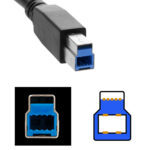
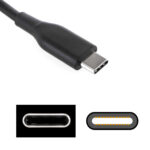
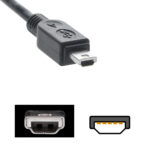


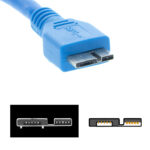

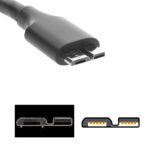

















 3万+
3万+

 被折叠的 条评论
为什么被折叠?
被折叠的 条评论
为什么被折叠?










